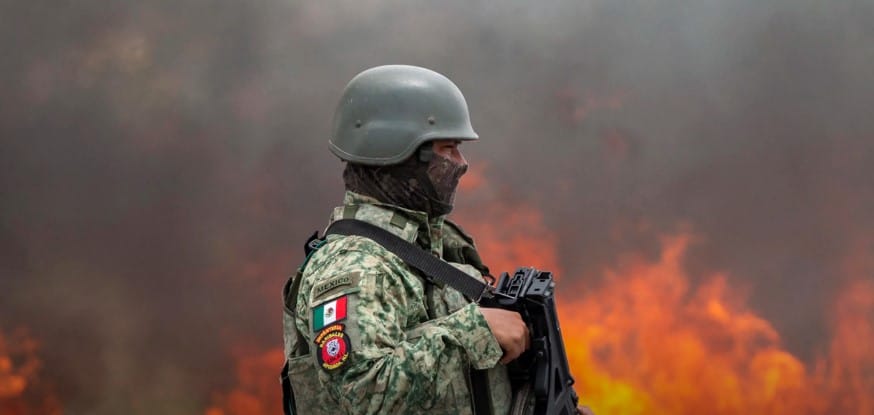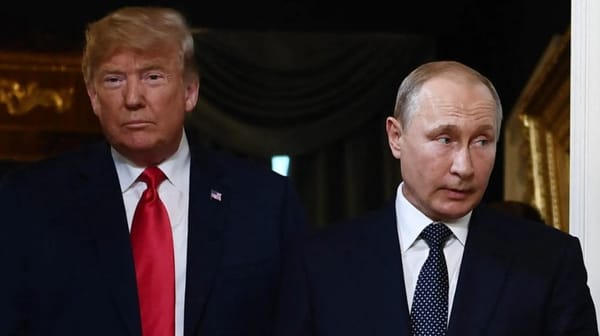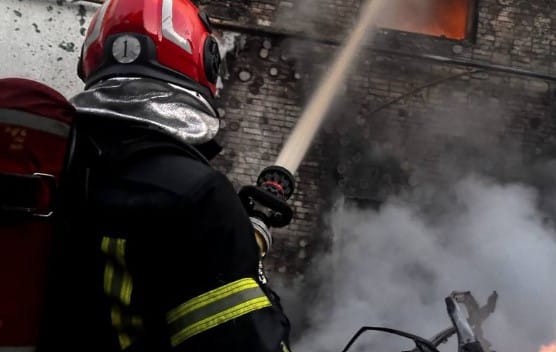Cartel Violence Erupts in Guanajuato, Mexico: The Killing of Seven Youths and the Deepening Security Crisis

Introduction
The killing of seven young men at a church festivity in San Bartolo de Berrios, Guanajuato, stands as a grim reminder of the relentless cartel violence that has come to define large swathes of Mexico’s heartland. This latest massacre, carried out by gunmen who opened fire in the village square after a community event, is not an isolated incident but part of a persistent and escalating struggle between rival criminal organizations vying for control over territory, illicit markets, and local populations. The attack, which has drawn condemnation from the Catholic Church and renewed national and international concern, underscores the profound security, social, and political challenges facing Mexico as it seeks to restore order and protect its citizens[1][2][3].
The Attack: What Happened in San Bartolo de Berrios
The Incident
In the early hours of Monday, May 19, 2025, as a church-organized festivity in the village of San Bartolo de Berrios was winding down, a group of young men lingered in the central square. It was then that gunmen, arriving in vehicles, unleashed a hail of bullets, killing seven people on the spot. Eyewitnesses described the attack as sudden and indiscriminate, with dozens of shots fired seemingly at random into the group[1:1][2:1][3:1].
Victims and Community Impact
All the victims were male, with some reportedly minors. The violence shattered the sense of safety in a rural community where such attacks are rare, particularly at events associated with the Catholic Church. The Episcopal Conference of Mexico and local archbishop Jaime Calderón condemned the attack, calling it a “wounding of the social fabric” and a sign of the “absence of peace in vast regions” of the country[1:2][2:2][3:2].
Cartel Signature
Authorities found banners at the scene and in nearby locations, bearing messages attributed to the Santa Rosa de Lima cartel. Such banners are a hallmark of cartel violence in Mexico, used to threaten rivals, intimidate communities, or justify attacks as retribution or punishment for perceived slights or “betrayals”[1:3][2:3][3:3].
Guanajuato: Mexico’s Epicenter of Violence
Statistical Overview
Guanajuato, a thriving industrial hub and home to popular tourist destinations, has become the deadliest state in Mexico. In 2024, it recorded 3,151 homicides—over 10% of the national total—making it the most violent state in the country for several years running[2:4][3:4][4]. Since 2006, when the Mexican government launched a military-led campaign against drug cartels, Mexico has suffered nearly half a million violent deaths, with Guanajuato consistently at the center of the bloodshed[2:5][3:5][5][4:1].
The Cartel War: Santa Rosa de Lima vs. Jalisco New Generation
The violence in Guanajuato is primarily driven by a bitter turf war between two powerful criminal organizations:
- Santa Rosa de Lima Cartel (SRL): Originally a local gang specializing in fuel theft (“huachicol”), extortion, and kidnapping, SRL has evolved into a formidable cartel with deep roots in rural Guanajuato. Despite the 2020 arrest of its leader, José Antonio “El Marro” Yépez Ortiz, the group remains active, relying on brutal tactics and community intimidation[6][7][8].
- Jalisco New Generation Cartel (CJNG): One of Mexico’s most powerful and violent cartels, CJNG seeks to expand its control over Guanajuato’s lucrative drug, fuel, and extortion markets. Known for its military-grade weaponry, use of car bombs, and willingness to attack police and civilians alike, CJNG has been locked in a bloody struggle with SRL for years[3:6][6:1][9][8:1].
This rivalry has led to repeated massacres, attacks on families, police, and bystanders, and a climate of fear that permeates daily life[10][3:7][6:2][4:2].
The Broader Pattern: Attacks on Civilians and the Church
Targeting Community Events
While attacks on bars, nightclubs, and cockfighting venues are tragically common in cartel-plagued states, violence at church-organized events is rare and especially shocking. The Catholic Church, which plays a central role in Mexican society, has increasingly found itself both a target and a voice of protest against the violence. In December 2024, the Church called for a truce among warring cartels, decrying the “spiral of violence” and the weakening of the social fabric[1:4][2:6][3:8].
Family Massacres and Indiscriminate Killings
The San Bartolo de Berrios shooting follows a deadly pattern seen elsewhere in Guanajuato and across Mexico. In July 2024, six members of two families were shot dead in Yuriria, Guanajuato, marking the third such massacre of family members in a single month. In Leon, gunmen stormed a home, killing six, including a baby and a toddler. These attacks often serve to terrorize communities, punish rivals, and demonstrate the cartels’ reach and ruthlessness[10:1][3:9][4:3].
The State’s Response and Its Limits
Law Enforcement Under Siege
Guanajuato’s police forces are among the most targeted in Mexico. In 2023 alone, the state saw more police officers killed than the entire United States, with at least 60 officers slain in the line of duty[10:2][6:3][4:4]. Cartels routinely attack police stations, ambush patrols, and leave the tortured bodies of officers in public places as warnings to others[6:4][11][4:5].
Military Operations and Arrests
The Mexican government has launched multiple operations to dismantle the cartels, arresting leaders and seizing assets. The 2020 capture of “El Marro” was hailed as a major victory, but violence has persisted, with new leaders emerging and the cartels adapting their tactics[7:1][8:2]. The deployment of the National Guard and federal forces has done little to stem the tide, and in some areas, the state’s presence remains tenuous at best[12][9:1][8:3].
The Role of the Federal Government
President Claudia Sheinbaum, who took office in October 2024, faces the daunting task of restoring security in the face of a reshuffling gang landscape and heightened violence. Her administration is expected to unveil a new national security strategy aimed at addressing gang-related violence, but the scale and complexity of the problem present formidable obstacles[4:6][8:4].
The Human Toll: Trauma, Displacement, and Fear
Civilian Victims
The primary victims of cartel violence are ordinary Mexicans—families, children, workers, and community leaders. The indiscriminate nature of the attacks, the use of torture, and the targeting of entire families have left deep scars on the social fabric. Communities live in fear, with many residents fleeing their homes or altering their daily routines to avoid becoming collateral damage[10:3][3:10][5:1][4:7].
Impact on Social Institutions
The repeated targeting of community events, places of worship, and public spaces has undermined trust in social institutions. The Catholic Church’s condemnation of the violence reflects a broader sense of moral and civic crisis, as traditional sources of authority and comfort are themselves under threat[1:5][2:7][3:11].
Migration and the U.S. Border
The violence in Guanajuato and other cartel hotspots has contributed to a surge in migration, as families seek safety and stability elsewhere. Many head north, adding to the pressures at the U.S.-Mexico border and fueling debates over asylum, security, and humanitarian response[5:2][13].
Cartel Tactics: Messages, Car Bombs, and Brutality
Public Messaging and Intimidation
Cartels routinely leave messages—banners, notes, or signs—at the scenes of their crimes. These messages serve multiple purposes: claiming responsibility, threatening rivals, warning the public, or justifying violence as “justice” for perceived betrayals[3:12][6:5][11:1]. The psychological impact is profound, reinforcing the cartels’ image as omnipresent and omnipotent.
Escalation of Violence
Recent months have seen an escalation in tactics, including the use of car bombs, coordinated attacks, and the targeting of rehabilitation centers and police stations[14][4:8]. The Jalisco New Generation Cartel, in particular, is notorious for its use of explosives and military-grade weaponry, as well as its willingness to engage in open combat with security forces[9:2][14:1][8:5].
Fuel Theft and Economic Motivations
While drug trafficking remains central, control over fuel theft (“huachicol”) routes has become a major source of revenue and conflict in Guanajuato. The Santa Rosa de Lima cartel’s origins in fuel theft have shaped its strategy and rivalry with CJNG, which seeks to expand its own operations in this lucrative sector[6:6][8:6].
The Broader Security Crisis: National and International Dimensions
Mexico’s Long War Against the Cartels
Since the government’s declaration of war on the cartels in 2006, Mexico has experienced an unrelenting wave of violence, corruption, and impunity. Despite billions of dollars in U.S. security assistance and repeated crackdowns, the cartels have proven resilient, adaptive, and deeply embedded in the country’s political and economic systems[5:3][13:1].
U.S.-Mexico Cooperation and Tensions
The United States has a direct stake in Mexico’s security crisis, given the flow of drugs, weapons, and migrants across the border. Recent years have seen renewed U.S. pressure on Mexico to crack down on fentanyl production and trafficking, with some U.S. officials designating major cartels as foreign terrorist organizations[13:2]. The Biden and Trump administrations have both pursued strategies of intelligence sharing, targeted operations, and joint task forces, but the results remain mixed.
International Concern
The violence in Guanajuato and similar regions has drawn international condemnation and travel advisories. The U.S. State Department has repeatedly warned Americans to reconsider travel to Guanajuato due to the high risk of violence[10:4][5:4]. Human rights organizations have called for greater protection of civilians and accountability for abuses by both cartels and security forces.
Community Responses and Calls for Peace
The Catholic Church’s Role
The Catholic Church remains a powerful voice for peace and reconciliation in Mexico. Its leaders have repeatedly called for a truce among cartels, denounced the spiral of violence, and urged the government to address the root causes of insecurity—poverty, corruption, and impunity[1:6][2:8][3:13].
Civil Society and Local Initiatives
Despite the risks, local communities and civil society organizations continue to resist cartel domination. Some have formed self-defense groups, while others focus on youth outreach, education, and economic development as alternatives to violence. The path is fraught with danger, as cartels often retaliate against those who challenge their authority.
The Way Forward: Challenges and Prospects
Restoring Security
Restoring security in Guanajuato and across Mexico will require a multifaceted approach: strengthening law enforcement, reforming the justice system, addressing corruption, and investing in social and economic development. The government’s new security strategy, set to be unveiled by President Sheinbaum, will be closely watched for its effectiveness and commitment to human rights[4:9][8:7].
International Cooperation
Continued cooperation with the United States and other international partners will be essential, particularly in disrupting transnational criminal networks, stemming the flow of arms, and addressing the root causes of migration and violence.
Addressing Impunity
Ending the culture of impunity—where crimes go unpunished and victims have little recourse—is central to breaking the cycle of violence. This will require political will, institutional reform, and sustained public pressure.
Conclusion
The massacre of seven youths at a church festivity in Guanajuato is a tragic chapter in Mexico’s ongoing struggle with cartel violence. It highlights the vulnerability of ordinary communities, the limits of state power, and the urgent need for comprehensive solutions. As Mexico confronts the intertwined challenges of organized crime, social breakdown, and impunity, the world watches—and hopes—for a return to peace and justice in a land long scarred by violence[1:7][2:9][3:14][4:10].
https://www.bbc.com/news/articles/c3v55r93053o ↩︎ ↩︎ ↩︎ ↩︎ ↩︎ ↩︎ ↩︎ ↩︎
https://timesofindia.indiatimes.com/world/rest-of-world/gunmen-kill-seven-in-central-mexico/articleshow/121285093.cms ↩︎ ↩︎ ↩︎ ↩︎ ↩︎ ↩︎ ↩︎ ↩︎ ↩︎ ↩︎
https://www.cbsnews.com/news/mexico-mass-shooting-deaths-cartel-messages-guanajuato/ ↩︎ ↩︎ ↩︎ ↩︎ ↩︎ ↩︎ ↩︎ ↩︎ ↩︎ ↩︎ ↩︎ ↩︎ ↩︎ ↩︎ ↩︎
https://www.dailysabah.com/world/americas/blood-on-mexican-streets-rising-cartel-violence-claims-12-lives ↩︎ ↩︎ ↩︎ ↩︎ ↩︎ ↩︎ ↩︎ ↩︎ ↩︎ ↩︎ ↩︎
https://www.cfr.org/global-conflict-tracker/conflict/criminal-violence-mexico ↩︎ ↩︎ ↩︎ ↩︎ ↩︎
https://www.newsweek.com/twelve-bodies-found-cartel-violence-1963788 ↩︎ ↩︎ ↩︎ ↩︎ ↩︎ ↩︎ ↩︎
https://www.occrp.org/en/news/mexico-arrests-cartel-leader-who-threatened-government ↩︎ ↩︎
https://acleddata.com/conflict-watchlist-2025/mexico/ ↩︎ ↩︎ ↩︎ ↩︎ ↩︎ ↩︎ ↩︎ ↩︎
https://english.elpais.com/international/2025-04-24/cartel-violence-erupts-in-michoacan-jalisco-and-guanajuato-in-a-new-wave-of-attacks.html ↩︎ ↩︎ ↩︎
https://www.cbsnews.com/news/familes-shot-dead-guanajuato-mexico-mass-killings-families-cartel-violence/ ↩︎ ↩︎ ↩︎ ↩︎ ↩︎
https://www.cbsnews.com/news/bodies-torture-found-cartel-messages-guanajuato-mexico/ ↩︎ ↩︎
https://apnews.com/article/mexico-guanajuato-killings-cartel-violence-dfafc1b069d0af93bd079ce567ff0cd1 ↩︎
https://www.cfr.org/backgrounder/mexicos-long-war-drugs-crime-and-cartels ↩︎ ↩︎ ↩︎
https://english.elpais.com/international/2024-10-25/car-bomb-attacks-signal-escalation-of-cartel-violence-in-mexico.html ↩︎ ↩︎




